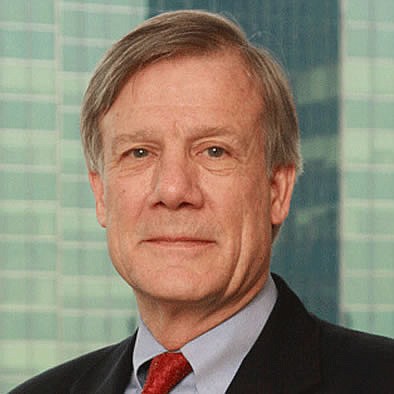The U.S. economic recovery is in the top of the 9th inning but still has extra innings to go in the third longest economic expansion in U.S. history, the top economist for the nation's biggest bank told Chattanooga business leaders Tuesday.
"I think we're going to look back on this as one of the best economic recoveries in our history," said Jim Glassman, managing director and head economist for commercial banking at JP Morgan Chase & Co. "We hear politicians say we've got to do something to get people back to work, but America is back to work."
The stock market and total employment is at an all-time high and on Tuesday the Census Bureau reported that median household income, adjusted for inflation, rose another 3.2 percent last year to reach a new high of $59,039.
Surpassing the 2007 median income, and lowering the jobless rate to pre-Great Recession levels, has taken eight years. But Glassman said the steady expansion should continue for at least three to five more years because of relatively low inflation rates, continued innovation in the economy and healthy property and stock valuations.
"This is now the third longest expansion in U.S. history and I expect it to go longer because as you look around it's hard to find things that remind you of the excesses that we saw in the past," Glassman told business leaders during a breakfast meeting sponsored by JP Morgan Chase, which operates an East Tennessee lending office in Chattanooga. "The opportunities that are out there because of innovation in our ecnomy are enormous."
Hurricane Harvey and Irma are creating economic disruptions across the South, but rebuilding from the storms should make up for most, but not all, of the losses, Glassman said.
Ahead of those storms, job openings posted by U.S. employers rose 0.9 percent to 6.2 million in July, the Labor Department said Tuesday. That's highest on records dating to 2000.
Hiring also increased and more people quit their jobs, which often means they are leaving for jobs that pay better.
Still, economic growth, as measured by the gross domestic product, has been more sluggish than in earlier decades. But that's largely because of demographic trends, Glassman said.
The retirement of baby boomers and the delay in family starts - and the smaller sizes of most families - is lowering the growth in the labor force and limiting a key driver of faster GDP growth in the past.
As America shifts to a service-based economy from the manufacturing economy of the past, GDP and trade measurements also don't capture all of the growth in non-merchandise activity, Glassman said.
Max Fuller, executive chairman of U.S. Xpress Enterprises in Chattanooga, agreed with Glassman that the U.S. economy is still growing. But Fuller likened the economy to the first inning of a baseball game.
Fuller said trucking shipments slowed last year and early this year. But activity is now growing again as the start of another upturn begins.
"We see activity in the economy that indicates this recovery should run for another two or three years," Fuller said. "We saw a recession of sorts last year and we think we're starting a new game now."
Even with more sluggish growth, median household income in the United States rose $4,641, or 8.5 percent, from 2014 through 2016. That's the best two-year gain on records dating to 1967, according to analysts at the Center on Budget and Policy Priorities.
Elise Gould, a senior economist at the Economic Policy Institute, said that adjusting for the change in methodology, median income still remains below its 1999 peak. Yet she added that the census report shows that American households have made significant economic progress in 2015 and 2016.
"We are definitely pulling ourselves out of the deep hole of the Great Recession," Gould said.
Despite the overall gains, the census data also showed that income inequality worsened last year, extending a trend in place for roughly four decades.
Average incomes among the wealthiest 5 percent climbed 5.5 percent to $375,088. Average incomes for the poorest one-fifth of households, meanwhile 2.5 percent to $12,943.
The Associated Press contributed to this report
Contact Dave Flessner at dflessner@timesfreepress.com or at 423-757-6340.
